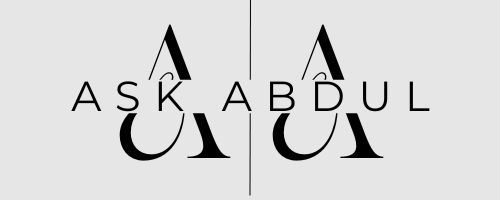Facebook Ads – How to get results with small budgets as affiliate

How New Affiliates Can Use Facebook Ads with a Small Budget
For new affiliates, Facebook advertising can feel like a daunting leap, especially when you’re working with a small budget. But here’s the good news: you don’t need a massive bankroll to see results. By focusing on proven strategies, leveraging competitor insights, and trusting Meta’s built-in tools, you can create campaigns that drive conversions and set you up for long-term success.
This guide breaks down exactly how new affiliates can use Facebook ads effectively with a small budget, keeping every dollar working hard for you.

What is a Small Budget for Facebook Ads?
When it comes to Facebook advertising, a small budget doesn’t mean limited possibilities. It simply requires a focused and strategic approach. For new affiliates, a small budget is often defined as anything under $600 per month (approximately $20 per day). This is what’s commonly referred to as a “tiny budget.” For slightly larger budgets, up to $3,000 per month ($100 per day), the term “small budget” still applies.
Starting with a smaller budget is not only realistic for beginners but also ideal for testing campaigns without risking financial stability. It allows you to gather insights about your audience and refine your strategies before scaling. However, operating with a small budget means you need to be highly intentional with every dollar spent.
The key takeaway: A small budget doesn’t limit your success—it sets the stage for creating lean, highly effective campaigns that can grow with your business.
Copy What Works: Leveraging Competitor Insights

When you’re working with a small budget, you don’t have the luxury to experiment with endless ad variations. Testing too many variables, like creative formats or copy styles, can drain your resources without yielding results. That’s why the smartest move is to copy what already works in your industry.
The easiest way to do this? Use the Meta Ads Library, a free tool that lets you see live ads from other brands in your niche. Start by researching competitors or successful affiliates in your field. Look for ads that have been running for several months. Why? Because if a company has kept an ad active that long, it’s likely performing well.
Now, the key here isn’t to plagiarize but to model success. Notice what’s working: Is it a video or an image? Is the tone playful, professional, or bold? Does the copy highlight benefits or emotional appeal? Take these clues and create your own version tailored to your affiliate audience.
By using this strategy, you save time and money—leveraging someone else’s hard work to shortcut your way to results. You don’t need a big budget to look like a pro; you just need to know where to look.
Reduce Variables for Maximum ROI
A small budget calls for laser focus. Instead of spreading your limited resources across multiple campaigns, ad sets, or creative variations, simplify. Start by advertising one product or offer—the one you believe will perform best.
If you’re unsure, focus on what has sold well before or what has the best margins. This ensures that even with a smaller audience, the profitability of each conversion is maximized.
Within your campaigns, reduce ad variables like multiple ad sets or too many creative combinations. A smaller budget won’t generate enough conversions for Meta’s algorithm to optimize effectively if you overload it with options. Focus on fewer variables to gather meaningful data faster, and expand once you’re ready to scale.
Trust Meta’s Algorithm for Small-Budget Success
When working with a small budget, Meta’s built-in optimization tools are your best friend. Features like Advantage+ Shopping Campaigns or Advantage+ Audience Targeting help automate ad delivery to the right audiences.
While it’s tempting to micromanage targeting or test unconventional ideas, smaller budgets don’t allow for much trial and error. Let Meta’s algorithm do the heavy lifting by finding the best audience for your ads. Remember, Meta’s success is tied to yours—they’re motivated to optimize your results to keep you advertising longer.
Setting Realistic ROAS Goals as a Beginner Affiliate
Many new affiliates expect massive returns on their ad spend (ROAS), like 10x or higher, but this is often unrealistic with a small budget. Instead, aim for a break-even ROAS, where the revenue from your ads covers your costs.
For example, if your target is a 2x ROAS, this means you’re making $2 in sales for every $1 spent. While this might not sound impressive, it’s enough to generate conversion data, build an audience, and gain confidence in your strategy. Once you have profitable campaigns, you can scale with a higher budget for greater returns.
The goal isn’t to strike it rich immediately—it’s to set a strong foundation for scalable success.
Why Brand Awareness Campaigns Don’t Work for Affiliates
Some advertisers spend on brand awareness campaigns to “get their business out there,” but for affiliates with small budgets, this is rarely effective. Awareness campaigns aren’t designed to generate direct sales or leads, making them a poor use of limited funds.
Instead, focus on direct-response campaigns tailored to drive specific actions, like clicks, leads, or purchases. With every dollar you spend, you want measurable results.
Let Ads Run: The Importance of the Learning Phase
One of the biggest mistakes beginners make is adjusting their campaigns too frequently. Meta’s algorithm needs time to learn and optimize, which typically takes at least 48 hours or longer for small-budget campaigns.
Avoid resetting the learning phase by making unnecessary tweaks too soon. Be patient and give your campaigns enough time to gather data before deciding whether they’re working. Smaller budgets may require weeks, not days, to provide clear results.
Niche Targeting: Your Key to Affiliate Marketing Success
Targeting your entire audience with a small budget is a recipe for failure. Instead, niche down and focus on a specific segment of your market. For example, rather than promoting a product to all fitness enthusiasts, target a smaller group, like busy professionals looking for home workout solutions.
This approach lets you tailor your messaging, making it more relevant and compelling to your audience. Specificity increases engagement and boosts conversion rates, even with a smaller spend.
How to Stay Ahead by Adopting New Meta Features
Smaller businesses have a competitive advantage: agility. Unlike large companies bogged down by decision-making processes, you can quickly adopt new Meta features or ad formats. Stay updated on Meta’s latest tools and strategies, and test them before the competition catches on.
For example, Advantage+ campaigns and Meta’s AI-powered tools are perfect for small-budget advertisers looking to maximize results.
Conclusion
Using Facebook ads with a small budget doesn’t mean compromising on results. For new affiliates, it’s about working smarter: leveraging proven strategies, trusting Meta’s tools, and focusing on what works. By simplifying campaigns, targeting niche audiences, and staying patient during the learning phase, you can turn a modest spend into a scalable success story.





